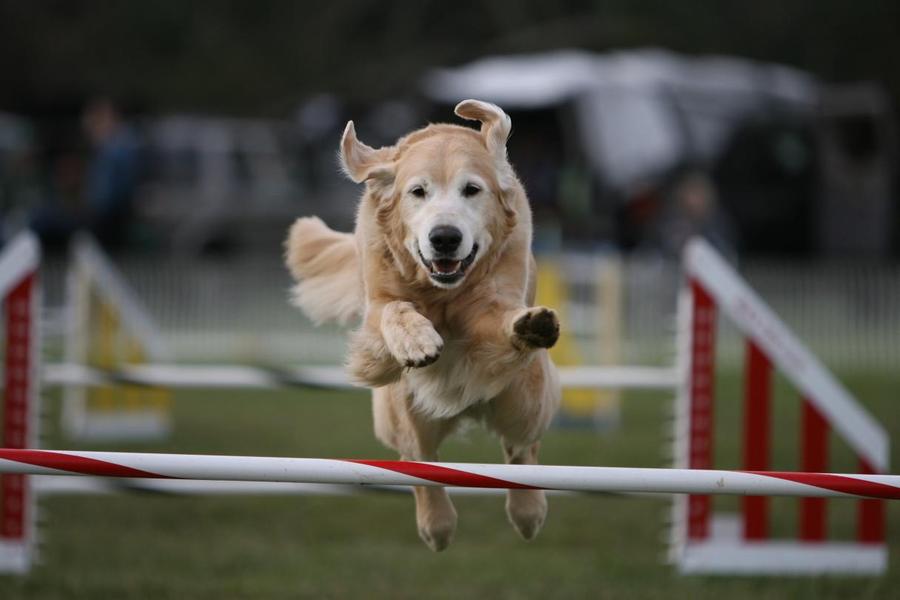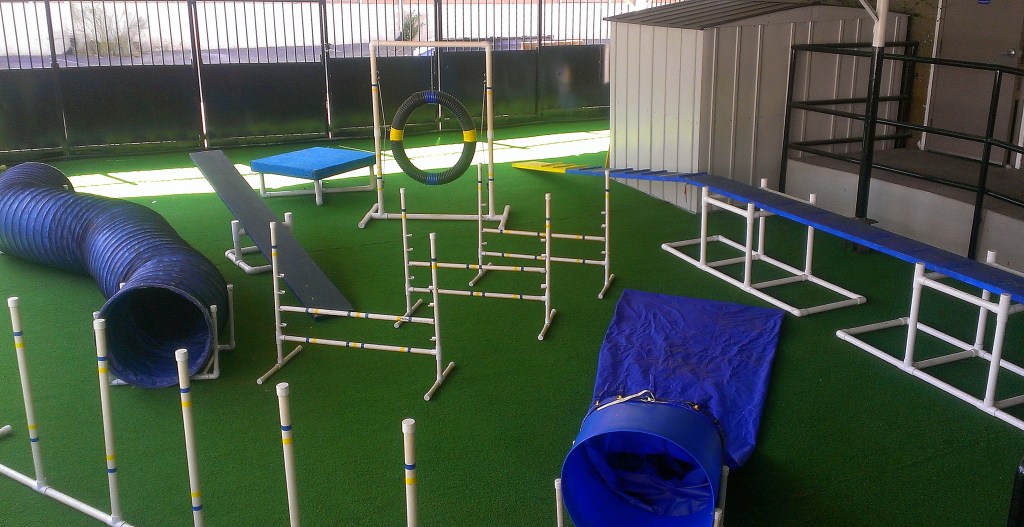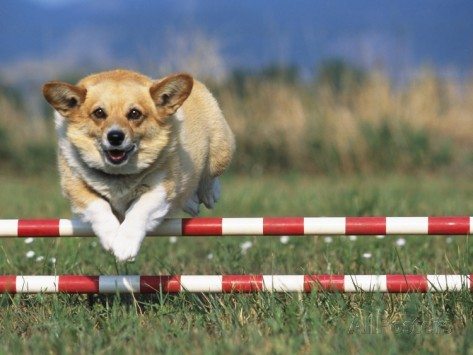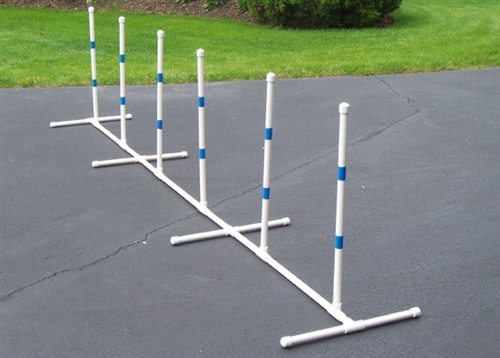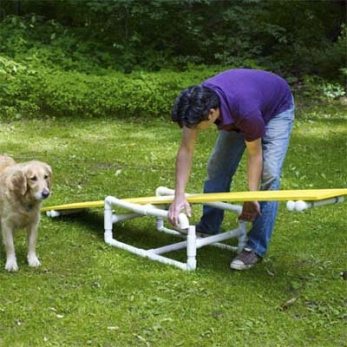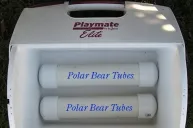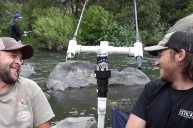Agility training is the perfect outlet for the active and energetic pup in your life.
The popular canine sport involves jumping, weaving, sprinting, and navigating to put your dog's natural instincts to work. To do it right, you'll need tunnels, weave poles, jumps, and space to spread out.
You'll find all that at your neighborhood agility course, but that means reserving time, loading your dog into the car, and driving over there.
If you're ready to turn your pup into a serious competitor, a backyard agility course is a convenient solution. Here's how to make it happen.
Getting Started
When building your backyard agility course, PVC pipe will be your best friend. Head to your local hardware store to stock up, and while you're there, pick up a good collection of pipe tees and elbows.
You'll use these parts to connect the pipes and construct your equipment. Other materials you'll need include screws, pipe straps, caps, and wood.
The Standard Jump
Jumps are an important component to every agility course. They build both muscle and confidence, and if dogs could talk, they'd probably say that jumps are also a lot of fun. To build your own, first cut your PVC pipes to the following lengths:
- 12 inches (8 pieces)
- 48 inches (2)
- 5 inches (2)
- 6 inches (2)
- 15 inches (2)
To assemble the jump, start with one side by using a five-inch pipe, a six-inch pipe, a 15-inch pipe, and four of the foot-longs to create a vertical pole with three "feet." Fit two tees into the vertical portion of the pole at varying heights. This is where you'll eventually connect the two sides and create the hurdle.
Repeat what you just did to make the other side of the jump. Once you have both ends completed, insert the 48-inch pipes into corresponding empty tee holes and connect the two sides.
Weave Poles
An AKC-regulated agility course includes a series of six weave poles. This obstacle will test your dog's speed and work his joints and muscles. To make your own set of weave poles, first cut more PVC pipe.
- 18 inches (9)
- 24 inches (6)
The key to building a quality set of weave poles is to ensure the base doesn't spin. Connect the 18-inch pipes with tees and use a drill to screw them together. Feel free to include extra tees into your design to add stability.
You should now have a long line of pipes fitted with six upward facing tees.
Start inserting the 24-inch pipes into the remaining holes of each of the six tees so they stick out perpendicular to the base. Lay the line on its side to make it flat and easier to work with. Once it's all assembled, screw the poles to the tees to keep them from spinning.
Teeter-Totter
The teeter-totter is a fun and challenging addition to the agility course. It tests a dog's confidence as well as impulse control. Having one in your backyard will give your pup a leg up on the competition. Here's what you'll need in regards to PVC pipe length:
- 3 inches (8)
- 19 inches (8)
- 14 inches (4)
- 12 inches of 2-inch pipe
You'll also need a long wooden plank about 12 inches wide.
To start, find the plank's balance point and attach the piece of two-inch pipe to the underside of the plank. This will be the teeter-totter's fulcrum.
To make the base, use the remaining pieces of pipe and a combination of elbows and tees to construct a box shape. Include center cross bars for added support and two open tees on opposite sides of the top of the frame.
Once you have both the frame and the plank ready to go, all you have to do is connect them. Situate the plank on top of the base so that the fulcrum lines up with the open tee spaces on the top of the frame. Insert the pipe into the tees and tap all frame connections to make sure the structure is stable.
Tunnel
The last thing you'll need to complete your backyard agility course is a tunnel. This is one thing you can't build out of PVC pipe, but you'll find collapsible children's play tunnels at Toys R US for around $25.

When it's all said and done, building your own course will cost you hundreds of dollars less than if you were to buy the obstacles from a pet equipment company. Both your budget and your dog will thank you.
